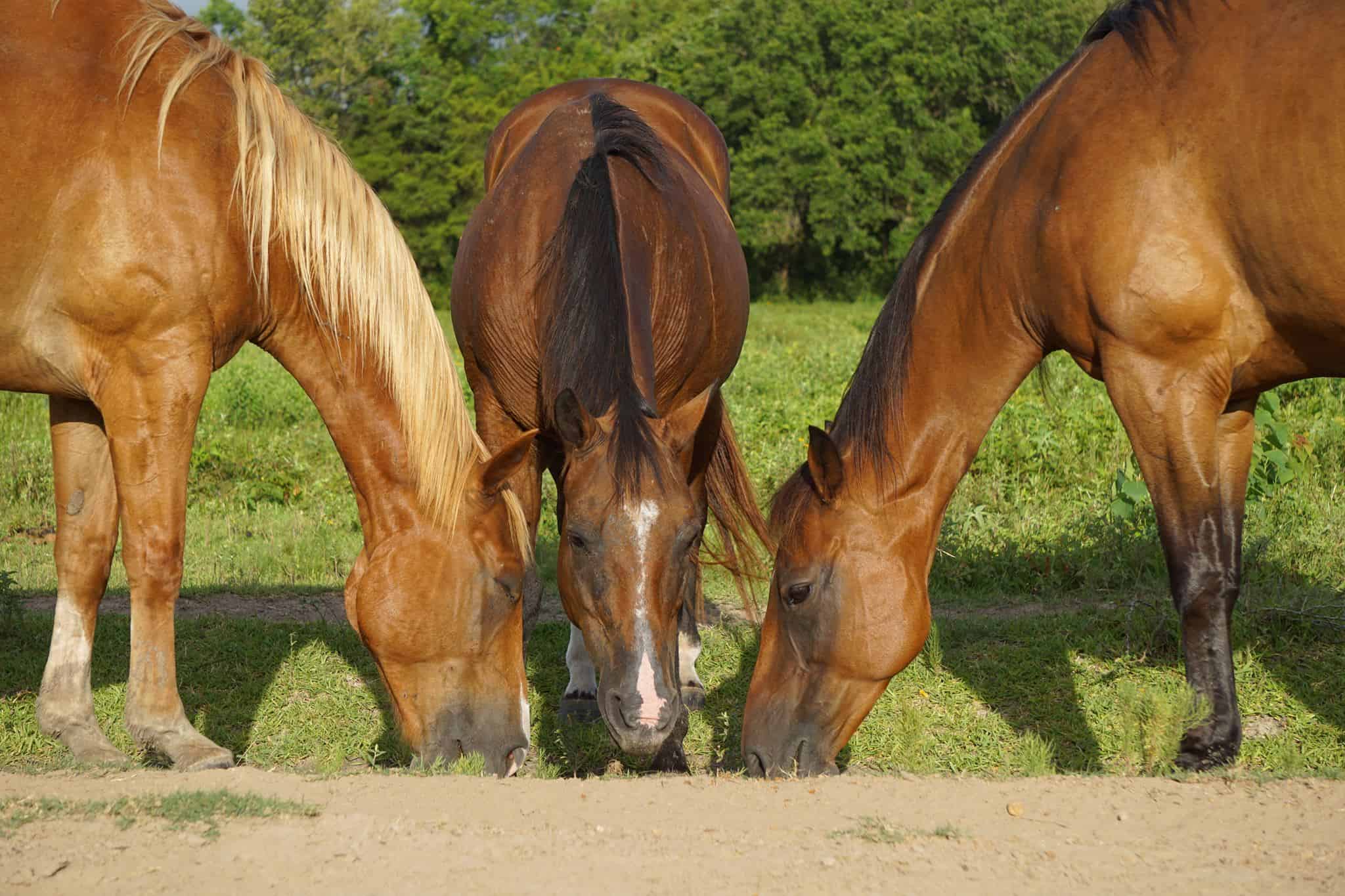
Learn how to create a balanced horse daily diet plan considering age, breed, activity level, and more. Find sample plans for lightly & moderately worked horses. #HorseNutrition #EquineHealth
Understanding Your Horse’s Nutritional Needs

Creating a balanced and effective horse daily diet plan starts with understanding your horse’s individual needs. Several factors influence a horse’s dietary requirements, including:
- Age: Younger horses in growth stages have different nutritional needs compared to mature horses.
- Breed: Certain breeds, like draft horses, require more calories for their larger frames.
- Activity Level: Horses engaged in strenuous exercise require additional energy sources.
- Overall Health: Horses with health conditions might need specialized diets.
- Pregnancy/Lactation: Mares expecting foals or nursing require increased nutritional support.
Roughage: The Foundation of a Horse’s Diet
Horses are hindgut fermenters, meaning their digestive system thrives on a diet rich in fiber. Roughage, consisting primarily of hay and pasture, forms the cornerstone of a healthy horse diet. Here’s a breakdown of roughage and its importance:
- Hay: The staple of most horse diets, hay provides essential fiber, vitamins, and minerals. Different hay types (alfalfa, timothy, etc.) offer varying nutrient profiles. Consult your veterinarian to choose the hay most suitable for your horse. A reputable hay supplier like Noble Hay Company.
- Pasture: Grazing on fresh grass provides horses with a natural source of roughage and fulfills their grazing instinct. However, uncontrolled grazing can lead to weight gain due to higher sugar content in young grass. Monitor grazing time and pasture quality.
Daily Roughage Intake Recommendations
The general recommendation for roughage intake is 1.5% to 2.5% of your horse’s body weight per day. This translates to roughly 15-25 pounds of hay for a 1,000-pound horse. Remember, this is a guideline, and adjustments might be necessary based on your horse’s specific needs.
Feeding Frequency and Hay Quality
- Divide your horse’s daily roughage intake into multiple small meals throughout the day to mimic natural grazing patterns and promote digestive health. Aim for feeding at least twice a day.
- Hay quality significantly impacts your horse’s diet. Choose hay that is free from dust, mold, and weeds. Look for hay with a fresh, green color and a pleasant smell.
Concentrates: Supplementing the Diet
Concentrates, also known as grain, provide additional nutrients like calories, protein, and fat for horses with higher energy demands. However, concentrates should never replace roughage as the primary feed source. Here’s what to consider regarding concentrates:
- Feeding Necessity: Not all horses require concentrates. Evaluate your horse’s workload and overall health before introducing concentrates.
- Type of Concentrate: Various concentrate options exist, formulated for specific needs. Consult your veterinarian to choose the right concentrate for your horse. A popular balanced feed option is Purina Equine Senior: [invalid URL removed].
- Feeding Amounts: Feeding guidelines are usually provided on concentrate packaging. Start with a small amount and gradually increase based on your horse’s needs. Overfeeding concentrates can lead to health problems.
Additional Considerations for a Horse Daily Diet Plan
- Fresh Water: Ensure your horse has access to clean, fresh water at all times. Hydration is crucial for overall health.
- Salt and Minerals: Horses require a balanced intake of electrolytes and minerals. Provide a salt lick or consult your veterinarian about mineral supplements. Himalayan Rock Salt: is a popular choice for horses.
- Gradual Changes: Introduce any dietary changes gradually to avoid digestive upset in your horse.
- Monitoring Weight and Health: Regularly monitor your horse’s weight and overall health to assess the effectiveness of the diet plan. Consult your veterinarian if you have any concerns.
Sample Horse Daily Diet Plans
Scenario 1: Lightly Worked Horse
- Morning: 10 lbs. good quality hay
- Afternoon: 10 lbs. good quality hay
- Evening: Limited grazing or a small amount of low-starch concentrate (consult veterinarian)
Scenario 2: Moderately Worked Horse
A moderately worked horse typically engages in activities like daily hacking for 1-2 hours, schooling for 30-60 minutes, or participating in riding club competitions and show jumping. To fuel this increased activity level, their diet will need to provide more calories and nutrients compared to a lightly worked horse. Here’s a sample daily diet plan for a moderately worked horse, along with a breakdown of each feeding
Morning:
12-15 lbs. good quality hay: This provides the foundation of fiber and essential nutrients. Choose a hay variety like early-bloom grass hay or a mix of grass and alfalfa hay for a good balance of protein and energy. You can find high-quality hay options from reputable suppliers.
- 2-3 lbs. of a balanced concentrate: Look for a concentrate formulated for moderate work with a protein content around 12-14%. Popular options include Purina Equine OM Senior or Triple Crown Senior . Start with a smaller amount and gradually increase based on your horse’s individual needs and energy expenditure.
Afternoon:
- 8-10 lbs. good quality hay: This provides sustained energy and keeps your horse occupied throughout the afternoon. Aim for a second cutting of hay, which often has higher protein content compared to first cuttings.
- Optional: A handful of soaked beet pulp shreds or chopped carrots can be offered as a source of additional vitamins, minerals, and beneficial prebiotics. Beet pulp is available from most feed stores or online retailers
Evening:
10-12 lbs. good quality hay: Nighttime grazing can be limited or replaced with hay to allow for proper digestion throughout the night. Consider offering a hay variety with higher stem content, like late-bloom grass hay, to promote slower digestion and keep your horse occupied during the evening hours.
Important Note:
This is a sample plan, and adjustments might be necessary based on your horse’s breed, weight, age, and specific activity level. Consult your veterinarian to create a personalized diet plan that addresses your horse’s unique needs.
Additional Tips:
- Feeding Frequency: Divide your horse’s daily hay intake into several small meals throughout the day, mimicking natural grazing patterns and promoting digestive health. Aim for feeding at least three times a day for moderately worked horses.
- Soak Hay (Optional): Soaking hay for 15-30 minutes before feeding can be beneficial for horses with respiratory issues or dental problems. Soaking softens the hay and removes dust, making it easier to chew and digest.
- Fresh Water: Ensure your horse has continuous access to clean, fresh water throughout the day.
- Salt and Minerals: Provide a salt lick or consult your veterinarian about mineral supplements to ensure your horse receives the necessary electrolytes and minerals. Himalayan Rock Salt is a popular choice for horses due to its readily available sodium and other trace minerals.
By following these guidelines and consulting with your veterinarian, you can create a balanced horse daily diet plan that fuels your equine friend for optimal health and performance.

Leave a Reply